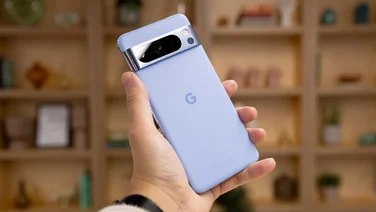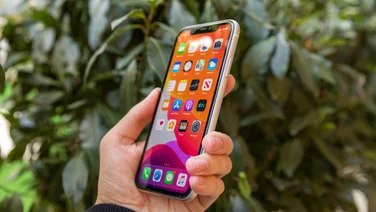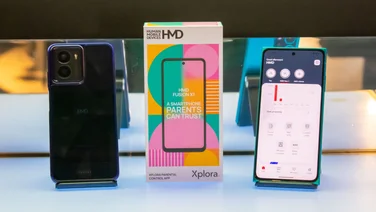To help us provide you with free impartial advice, we may earn a commission if you buy through links on our site. Learn more




Nokia’s X7 is a solidly-built smartphone with a futuristic design. The front of the phone is all screen, with a glossy black bezel and angular grilles on each corner, while the back is smooth and rounded, made from brushed metal. It’s a daring design, but we think it works really well. Like most Nokia hardware, it feels really well put together, but at 146g it’s not particularly heavy.

The top edge includes the power button, a micro-USB data and charging port, and a standard 3.5mm headphone port. The right side has a volume rocker and camera shutter button, while the left side has two slide-out trays for the SIM and memory cards. The X7’s screen has an unusual 360 x 640 resolution, also known as nHD (so called because it’s a ninth of the Full HD 1,920 x 1,080 resolution). This is much smaller than the 480 x 800 found on most other large-screen smartphones, and much less than the qHD (quarter HD) resolution on the HTC Sensation (see What’s New, Shopper 283), but in practice we found it clear and bright, with accurate colours.
The 8-megapixel camera takes crisp and colourful shots with little noise, and with its dual-LED flash, low-light shots aren’t a problem. It can also shoot video at 720p quality, which again is sharp and has strong colours. It handles movement better than other smartphone cameras we’ve seen, with no sign of compression artefacts. Nokia ships the X7 with an 8GB microSDHC card, which is enough for thousands of MP3s and photos, but it can handle cards up to 32GB in size.

As with most Nokia handsets, however, the outstanding hardware is held back by the outdated software. This is a new version of Symbian, but aside from a few cosmetic changes, it’s much the same as it’s always been. Ironically, now that Nokia has decided to release future phones with Windows Phone instead of Symbian, Nokia’s Ovi app store has started to fill out with some useful apps, but there still aren’t as many good ones as in Apple’s App Store or the Android Market.
It’s more the guts of Symbian that put us off using it on a day-to day basis. The main menu, accessed by pressing the single button underneath the screen, includes some common apps, as well as some icons that look like apps but are in fact folders with further collections of apps. An Applications folder contains more apps, and more folders with more apps. Despite some attempt to group apps by function, there’s little logic in this organisation.

The Settings menu has changed little over the years, and again it’s a mess of options that makes it hard to adjust advanced settings. Thankfully, you no longer have to define a Connection before you can choose a Wi-Fi network and connect to it, but quirks remain; to disconnect from a network, for example, you have to long-press on it in the WLAN menu, rather than simply unticking a Wi-Fi box as on most other phones. You won’t to worry too much about Wi-Fi use, though – the X7 has fantastic battery life, lasting almost three times as long as many Android smartphones in our MP3 playback test.

We can’t see any reason to buy a Symbian phone now, but the X7 is such a beautifully-made device that it’s almost tempting. If you’re used to Symbian, your familiarity with the operating system may entice you towards the phone, but we can’t see those who’ve tried Android or iOS taking the plunge.




